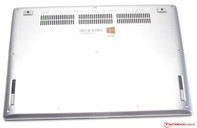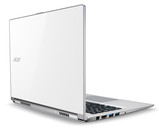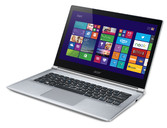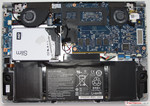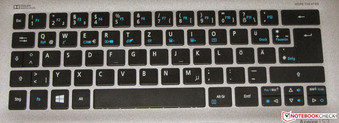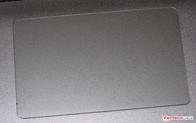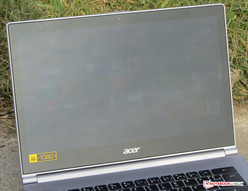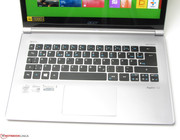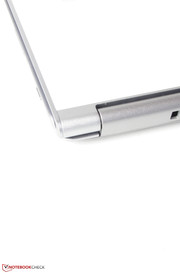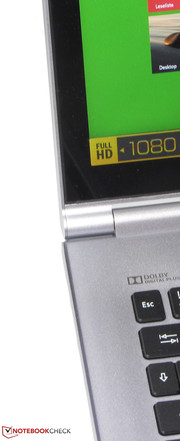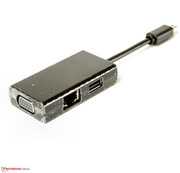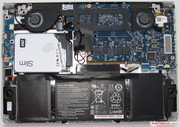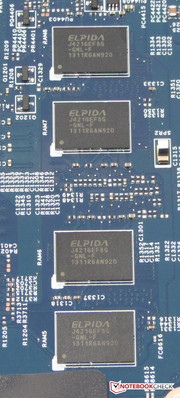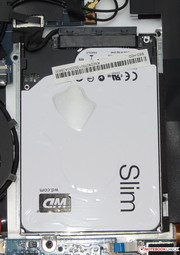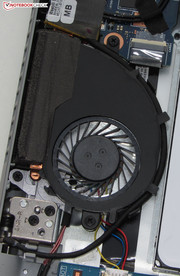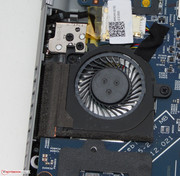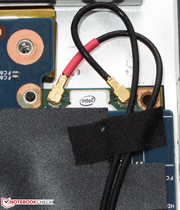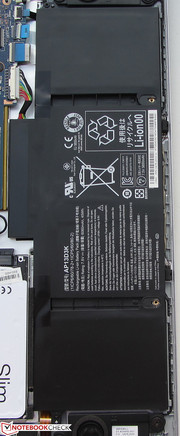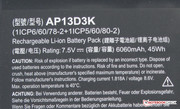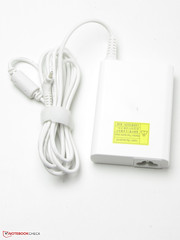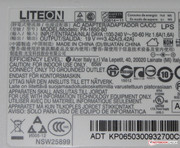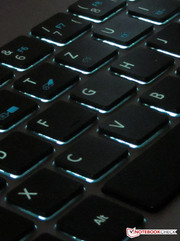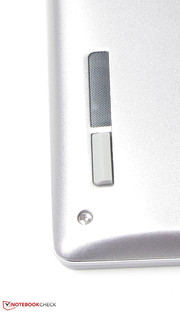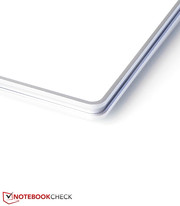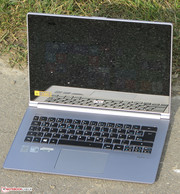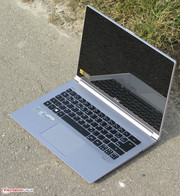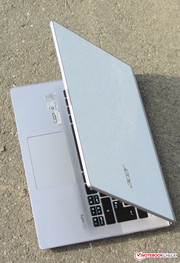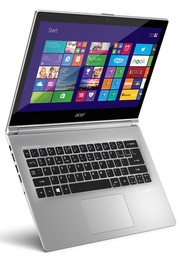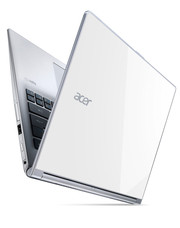Review Acer Aspire S3-392G Ultrabook
For the original German review, see here.
If you are looking for a slim and powerful 13.3-inch notebook, look no further: presenting the Acer Aspire S3-392G. This category is filled with a multitude of competitors, such as the MacBook Air or the Asus Zenbook. Acer has also launched the Aspire S7-392, which offers similar qualities. The one thing all these models have in common is their price tag: well above 1,000 Euros (~$1382).
The Aspire S3-392G is a little cheaper: 999 Euros (~$1380) is the base price. Of course, Acer had to cut some corners to offer this model at such a (relatively) low price. The laptop may have no SSD, but it does use a touch full HD screen. Despite all this, the model offers quite a lot. One look at the technical specifications reveals that Acer has built a mobile and powerful 13.3-inch Ultrabook, which is capable of heavy processing and gaming. In our in-depth review, we will delve into all the features of this notebook.
We will use two models for comparison: the Asus Zenbook UX302LA-C4003H (Core i5-4200U, HD Graphics 4400) and the Sony Vaio Fit 13A SV-F13N1L2E/S (Core i5-4200U, HD Graphics 4400).
Case
We have previously tested the Aspire S3-951 and the Aspire S3-391 (predecessors of the S3-392G). While they have a similar build, the successor employs a better-looking case, which is quite similar to that of the higher-priced Aspire S7-392. For example, the display cover and the base look identical. The color (White Aluminum) is also the same. However, the S7-392 has its display cover protected by Gorilla Glass, whereas the S3-392G lacks any such protective measures. The bases of the laptops are made of aluminum and magnesium. The S3-392 is thicker than its higher-priced sibling: 5 mm (~0.2 inches) more at the thickest point and around 2.6 mm (~0.1 inches) more at the thinnest.
The Ultrabook has great workmanship. We found one weak area: the surface beneath the touchpad can be pressed inwards a little. The base is very resistant and cannot be deformed. The display cover is weaker. If pressed hard, it can cause picture deformations. However, it is within reasonable limits and we have seen worse in many other models. The hinges hold the panel securely in position. Opening the laptop with one hand is possible.
Connectivity
The case is quite slim yet Acer has managed to integrate all necessary ports. In comparison to the predecessor (Aspire S3-391), the connectivity has been much improved. The ports of our S3-392G are the same as those of the Aspire S7-392. In contrast to the predecessor, the S3-391, the S3-392G has a third USB port and a mini DisplayPort. A provided adapter allows users to extend the connectivity of their laptop via the mini DisplayPort: the adapter adds on a VGA output, a Fast Ethernet port and an additional USB 2.0 port. The distribution of the ports is good: all ports are placed near the back on both sides. This leaves the hand-rest regions free.
Communication
Acer has installed a WLAN module from Intel (Wireless-N 7260), which supports the standards 802.11 b/g/n. The Wi-Fi reception is great: the transmission is fine in a radius of 15 meters (~49 feet, router output set to around 50%). This is a standardized test. Furthermore, the laptop can be connected via a LAN cable. The provided adapter allows the user to use a Fast Ethernet port. A Bluetooth 4.0 module is also in the device. The integrated webcam provides a blurry image despite supporting resolutions up to 1280x720 pixels.
Accessories
Aside from the adapter, the Aspire comes with the usual documents: a quick start booklet, a short manual and warranty card.
Operating System
The Aspire has Windows 8.1 (64-bit) preinstalled. A Windows DVD is not included in the package. After receiving the notebook, we recommend creating a recovery medium. Acer has provided software to this end, which regularly reminds the user to make a backup. A USB drive or DVDs can be used to make backups (the latter will require an external burner).
Maintenance
There is no maintenance flap in the Aspire. However, the user can still access the innards of the laptop by simply removing all screws (Torx) on the bottom of the device. Once the bottom plate is lifted out, the battery, fan and hard disk can be accessed. The motherboard would have to be taken out to access the other hardware. There are no memory slots provided on this motherboard as the RAM is soldered into the device. Acer employs 2x 2,048 MB RAM modules, which allows it to run in dual-channel mode. The hard disk can be easily removed and replaced with a device with a build height of 7 mm. The removal of the battery is also possible (in case of a defect).
Warranty
The Aspire is equipped with a two-year warranty, which includes pick-up service. The same applies to the Zenbook and the Vaio. The warranty period can be extended - a three-year warranty will cost another 70 Euros (~$97). For a five-year warranty, the user will have to pay 180 Euros (~$249).
Input Devices
Keyboard
Acer has installed a backlit chiclet keyboard. Two function keys regulate the brightness of the keyboard. Two brightness levels are provided. The key size and layout of the keyboard is the same as that of the Aspire S7-392. Acer uses flat, smooth keys that have short stroke distance. The pressure point is noticeable and the keys have a comfortable resistance. Overall, we like the keyboard.
Touchpad
The multi-touch ClickPad (a touchpad without separate mouse keys) has a surface area of 10.5 x 6.5 cm (~4.1 x 2.6 inches). The smooth surface of the device makes it easy for the finger to glide. The individual multi-touch gestures can be customized in the settings. Per default, not all gestures are turned on. The touchpad ClickPad has a short stroke distance and a clearly audible click.
Touchscreen
The user is also provided a touchscreen with 10-finger support for input. The screen reacts promptly to any and all input.
Display
| |||||||||||||||||||||||||
Brightness Distribution: 87 %
Center on Battery: 284 cd/m²
Contrast: 1136:1 (Black: 0.25 cd/m²)
ΔE ColorChecker Calman: 4.39 | ∀{0.5-29.43 Ø4.78}
ΔE Greyscale Calman: 3.3 | ∀{0.09-98 Ø5}
43.6% AdobeRGB 1998 (Argyll 1.6.3 3D)
48.07% AdobeRGB 1998 (Argyll 3D)
68.4% sRGB (Argyll 3D)
46.35% Display P3 (Argyll 3D)
Gamma: 2.52
CCT: 6591 K
Although the Aspire was beaten in brightness by its two competitors, it trumps them in turn when it comes to the contrast (1,136:1) and black value (0.25 cd/m²). The Zenbook (619:1, 0.52 cd/m²) and the Vaio (584:1, 0.63 cd/m²) cannot compete. The sRGB and AdobeRGB color spaces are not covered by the panel. They would be useful to professional graphics editors. The coverage is 60.1% (sRGB) and 43.6% (AdobeRGB).
The color deviations are small with the factory settings. The average DeltaE 2000 deviation is around 4.4. The majority of panels we measure have deviations of around 10-12. Many colors even land in the target color space (DeltaE smaller than 3). The panel has no blue tinge.
Although the panel has decent brightness and high contrast, working outdoors is not recommended due to the reflective panel.
Performance
The Aspire S3-392G is a slim and light 13.3-inch Ultrabook and as our benchmarks show, it offers more than enough performance for everyday tasks. In fact, the device can even be used to run the latest games. Our test model is available for around 999 Euros (~$1380). We could not find any other configurations.
Processor
The Aspire runs on a Core i5-4200U CPU. This dual-core CPU originates from the latest Intel Haswell generation and runs at 1.6 GHz. Turbo allows the processor to boost its speed up to 2.3 GHz (both cores) and 2.6 GHz (single-core). The CPU is one of the most conservative ones in the line-up at a TDP value of 15 W.
The CPU is able to unleash its full potential in this slim Ultrabook. We tested it in a series of CPU tests from Cinebench benchmarks (on battery and plugged in). The processor always operated at full speed and the results are as high as we expected. The Vaio and the Zenbook are equipped with the same CPU and offer almost identical results. However, the Vaio cannot tap its full potential and lags behind slightly in the multi-thread tests.
System Performance
The system runs smoothly. Windows boots up quickly and we did not encounter any issues. This positive subjective impression is bolstered by the good PC Mark results. The Aspire benefits strongly from its SSD cache. The Zenbook is also equipped with an SSD cache, but it still lags behind our test model. The Vaio is a bit better off as it uses an SSD.
| PCMark Vantage Result | 5971 points | |
| PCMark 7 Score | 3860 points | |
| PCMark 8 Home Score Accelerated v2 | 2345 points | |
| PCMark 8 Creative Score Accelerated v2 | 2547 points | |
| PCMark 8 Work Score Accelerated v2 | 3034 points | |
Help | ||
Storage Devices
Acer has chosen a Western Digital hard disk for the Aspire. The model runs at 5,400 rpm and offers a capacity of 1 TB. The hard disk has an SSD cache (24 GB) and in CrystalDiskMark it records a read rate of 105.4 MB/s. HD Tune measures an average transfer rate of 92.3 MB/s. These are very good values for a 5,400 rpm HDD. The 4k read and write test results are also above average.
Graphics Card
Aside from the integrated HD Graphics 4400, the laptop uses a GeForce GT 735M GPU. The notebook thus has enough graphics performance for modern games. Thankfully, the two graphics chips are connected using Optimus: this technology allows the IGP (Integrated Graphics Processor) of the processor to deal with less demanding tasks, whereas more demanding programs, such as games, will be dealt with by the GeForce GPU. Both chips support DirectX 11. The GeForce core belongs to the middle-class amongst GPUs. Its base clock speed is 575 MHz and thanks to Turbo it can operate at 941 MHz.
The Aspire is the only notebook amongst our comparison models equipped with a dedicated GPU. As such, it easily beats the competition in the 3D Mark benchmarks.
| 3DMark 06 Standard Score | 8130 points | |
| 3DMark Vantage P Result | 5666 points | |
| 3DMark 11 Performance | 1804 points | |
| 3DMark Ice Storm Standard Score | 46425 points | |
| 3DMark Cloud Gate Standard Score | 4955 points | |
| 3DMark Fire Strike Score | 1037 points | |
Help | ||
| Acer Aspire S3-392G GeForce GT 735M, 4200U, WDC WD10SPCX-22HWST0 + Kingston SMS151S324G 24 GB SSD Cache | Asus Zenbook UX302LA-C4003H HD Graphics 4400, 4200U, Hitachi Travelstar Z5K500 HTS545050A7E680 + 24 GB SanDisk SSD U100 Cache | Sony Vaio Fit multi-flip SV-F13N1L2E/S HD Graphics 4400, 4200U, Samsung MZNTD128HAGM | Acer Aspire S7-392 HD Graphics 4400, 4500U, 2x Kingston SMSR150S3256G (RAID 0) | |
|---|---|---|---|---|
| 3DMark | -22% | -42% | -33% | |
| 1280x720 Ice Storm Standard Score (Points) | 46425 | 40049 -14% | 28829 -38% | 28849 -38% |
| 1280x720 Cloud Gate Standard Score (Points) | 4955 | 4409 -11% | 3236 -35% | 4119 -17% |
| 1920x1080 Fire Strike Score (Points) | 1037 | 622 -40% | 498 -52% | 583 -44% |
Gaming Performance
A slim 13.3-inch Ultrabook capable of running the latest games - a rare phenomenon. The Aspire runs most games fluidly in the HD resolution (1366x768 pixels) and medium details (sometimes even high details).
| low | med. | high | ultra | |
|---|---|---|---|---|
| Tomb Raider (2013) | 86.3 | 42.9 | 23.6 | |
| StarCraft II: Heart of the Swarm (2013) | 67.5 | 41.2 | 14.1 | |
| BioShock Infinite (2013) | 64.6 | 35.6 | 29.9 | |
| GRID 2 (2013) | 62.4 | 42.9 | 13.1 | |
| Splinter Cell: Blacklist (2013) | 45.1 | 32.7 | 15.6 | |
| Saints Row IV (2013) | 42.6 | 35.6 | 14.4 | |
| The Bureau: XCOM Declassified (2013) | 37.9 | 33.3 | 21.1 | |
| Total War: Rome II (2013) | 60.1 | 41.5 | 33.6 | 10.1 |
| Fifa 14 (2013) | 108.7 | 57.4 | ||
| F1 2013 (2013) | 93 | 75 | 64 | 27 |
| Batman: Arkham Origins (2013) | 75 | 44 | 21 | |
| Battlefield 4 (2013) | 48.4 | 33 | 23.2 | |
| Call of Duty: Ghosts (2013) | 53.7 | 29.9 | 18.7 | |
| Need for Speed: Rivals (2013) | 29.7 | 27.6 | 21 | |
| X-Plane 10.25 (2013) | 73.4 | 33.9 | 12.9 | |
| Thief (2014) | 25.1 | 14.7 | 11.9 | |
| Titanfall (2014) | 52.6 | 25.1 | 20.7 |
| Acer Aspire S3-392G GeForce GT 735M, 4200U, WDC WD10SPCX-22HWST0 + Kingston SMS151S324G 24 GB SSD Cache | Asus Zenbook UX302LA-C4003H HD Graphics 4400, 4200U, Hitachi Travelstar Z5K500 HTS545050A7E680 + 24 GB SanDisk SSD U100 Cache | Sony Vaio Fit multi-flip SV-F13N1L2E/S HD Graphics 4400, 4200U, Samsung MZNTD128HAGM | Acer Aspire S7-392 HD Graphics 4400, 4500U, 2x Kingston SMSR150S3256G (RAID 0) | |
|---|---|---|---|---|
| Tomb Raider | -42% | |||
| 1024x768 Low Preset (fps) | 86.3 | 47.6 -45% | ||
| 1366x768 Normal Preset AA:FX AF:4x (fps) | 42.9 | 24.4 -43% | ||
| 1366x768 High Preset AA:FX AF:8x (fps) | 23.6 | 14.9 -37% | ||
| F1 2013 | -47% | |||
| 1024x768 Ultra Low Preset (fps) | 93 | 58 -38% | ||
| 1366x768 Medium Preset (fps) | 75 | 34 -55% | ||
| Fifa 14 | -45% | |||
| 1366x768 High Preset AA:2x MS (fps) | 108.7 | 59 -46% | ||
| 1920x1080 High Preset AA:4x MS (fps) | 57.4 | 33 -43% | ||
| Total Average (Program / Settings) | -47% /
-47% | -45% /
-45% | -42% /
-42% |
Emissions
System Noise
Acer uses a cooling system consisting of two fans. Still, the notebook is very quiet while idle. We measured noise emissions of 30.1 to 31.1 dB(A). The Zenbook displays a similar behavior (30-32.4 dB(A)). The values of the Vaio (29.6-35.8 dB(A)) are slightly higher. As the Aspire is equipped with a dedicated graphics card, we believe that it will have the highest noise emission. However, this is not the case, as at medium load (3D Mark 06 running) and full load (stress test, Prime95 and FurMark running), the emissions are between 36.9 and 40.6 dB(A). In contrast, the Vaio (42.7-42.7 dB(A)) tops these levels. The Zenbook (34.4-35.4 dB(A)) is quiet at load.
Noise level
| Idle |
| 30.3 / 30.3 / 30.3 dB(A) |
| HDD |
| 31.1 dB(A) |
| Load |
| 36.9 / 40.6 dB(A) |
 | ||
30 dB silent 40 dB(A) audible 50 dB(A) loud |
||
min: | ||
Temperature
While idle, all models have good temperatures. At full load, they all heat up, but to an acceptable degree. The Aspire crosses the 50-degree mark (122 degrees Fahrenheit) at one point (near the fan). The Vaio operates in the 40 degrees (104 Fahrenheit) region and the Zenbook barely warms up.
We were surprised by the behavior during our stress test (Prime95 and FurMark run for at least an hour). CPU and GPU run at full speed while the laptop is plugged in (CPU: 2.3 GHz, GPU: 941 MHz). After about an hour, the CPU occasionally throttles down to 2.2 GHz. We expected the GPU to throttle significantly given the slimness of the notebook. However, even on battery, the GPU runs the stress test at 941 MHz. After about 5 minutes, the CPU throttles down to 2.1 - 2.2 GHz. During the stress test (plugged in), the CPU temperature was around 81 degrees (177.8 Fahrenheit).
(-) The maximum temperature on the upper side is 45.5 °C / 114 F, compared to the average of 35.9 °C / 97 F, ranging from 21.4 to 59 °C for the class Subnotebook.
(-) The bottom heats up to a maximum of 53.6 °C / 128 F, compared to the average of 39.3 °C / 103 F
(+) In idle usage, the average temperature for the upper side is 28.5 °C / 83 F, compared to the device average of 30.8 °C / 87 F.
(+) The palmrests and touchpad are cooler than skin temperature with a maximum of 30.3 °C / 86.5 F and are therefore cool to the touch.
(-) The average temperature of the palmrest area of similar devices was 28.2 °C / 82.8 F (-2.1 °C / -3.7 F).
Speakers
The stereo speakers of the Aspire are placed at the bottom of the laptop. They produce a good sound but lack bass. Speech is audible and understandable. We recommend headphones or external speakers for better audio quality.
Energy Management
Power Consumption
While idle, the power consumption of all the models is in the expected region (below 10 W). After all, these devices are equipped with ULV processors. At medium load (3D Mark 06 running) and full load (stress test, Prime95 and FurMark running), the Aspire requires 39-46.7 W. The competitors require less power as they lack a dedicated graphics card: Zenbook (31.3-31.8 W) and the Vaio (22-22.6 W). The Vaio is very conservative, as it does not use its Turbo on battery.
| Off / Standby | |
| Idle | |
| Load |
|
Key:
min: | |
Battery Life
While idle, the Aspire reaches a run time of 9:55 h, placing it between the Zenbook (11:49 h) and the Vaio (8:54 h). We checked the idle run time using the Battery Eater Reader’s test. The display is set to the lowest brightness, the "Power Saver" profile is turned on and wireless modules are switched off. At load, the Aspire runs for 1:49 h. The Zenbook (1:44 h) and the Vaio (1:54 h) offer similar run times. The run time at load is measured using the Battery Eater Classic Test. The screen is set to the highest brightness, the profile is set to "High Performance" and the wireless modules are turned on.
The Aspire finishes the WLAN test with a decent 5:53 h. The Vaio (5:14 h) and the Zenbook (5:36 h) lag a little behind. In this test, we automatically load websites every 40 seconds. The "Power Saver" profile is active and brightness is set to 150 cd/m². Finally, the video playback test records how long the laptop can play a movie. We picked the short film Big Buck Bunny (H.264-coded, 1920x1080 pixels) and set it to loop. The "Power Saver" profile was active, the wireless modules turned off and brightness set to 150 cd/m². The Aspire can last 5:49 h while the Vaio (5:04 h) gives up earlier. The Zenbook was not tested.
Overall, for an Ultrabook, the Acer Aspire test model offers good run times.
| Acer Aspire S3-392G GeForce GT 735M, 4200U, WDC WD10SPCX-22HWST0 + Kingston SMS151S324G 24 GB SSD Cache | Asus Zenbook UX302LA-C4003H HD Graphics 4400, 4200U, Hitachi Travelstar Z5K500 HTS545050A7E680 + 24 GB SanDisk SSD U100 Cache | Sony Vaio Fit multi-flip SV-F13N1L2E/S HD Graphics 4400, 4200U, Samsung MZNTD128HAGM | Acer Aspire S7-392 HD Graphics 4400, 4500U, 2x Kingston SMSR150S3256G (RAID 0) | |
|---|---|---|---|---|
| Battery runtime | 3% | -5% | 11% | |
| Reader / Idle (h) | 9.9 | 11.8 19% | 8.9 -10% | 12.2 23% |
| WiFi (h) | 5.9 | 5.6 -5% | 5.2 -12% | 6.2 5% |
| Load (h) | 1.8 | 1.7 -6% | 1.9 6% | 1.9 6% |
Verdict
The Acer Aspire S3-392G is a small, mobile Ultrabook which offers good program and gaming performance. The laptop has enough storage space and good battery life. Furthermore, the power consumption is quite low and the Ultrabook is very quiet (while idle). Although in the past, Acer often skimped on the display, our test model has a wonderful panel: brightness and contrast are good and the viewing angles are stable. We did not find a major flaw in the model and as such, we can understand the price of around 1,000 Euros (~$1382). However, we do expect a Windows DVD for this price.
The Asus Zenbook UX302LA-C4003H has a hard time against the test model. The Zenbook uses the same CPU, but is prone to throttling. In the practical battery tests, it could not beat the test model. Furthermore, the Zenbook lacks a dedicated GPU and is priced at 1,200 Euros (~$1658) - much more expensive than the Aspire. The Sony Vaio Fit 13A multi-flip SV-F13N1L2E/S also costs more than our test model at 1,100 Euros (~$1520). However, it offers many different modes, which are an interesting alternative. For example, it can be used as a classical notebook or as a tablet. If you cannot decide between an Ultrabook and a tablet, the Vaio may be the right pick for you.




